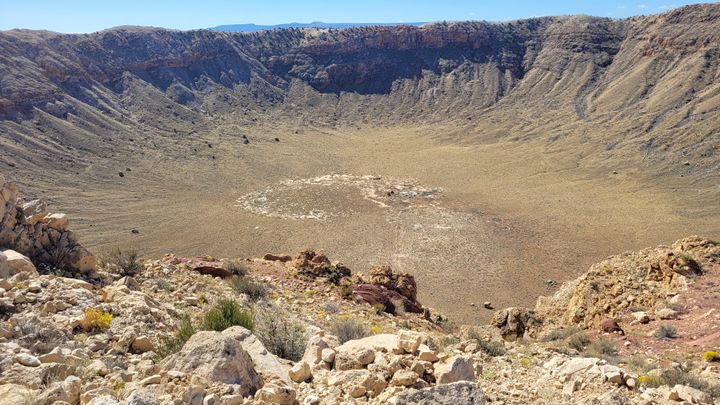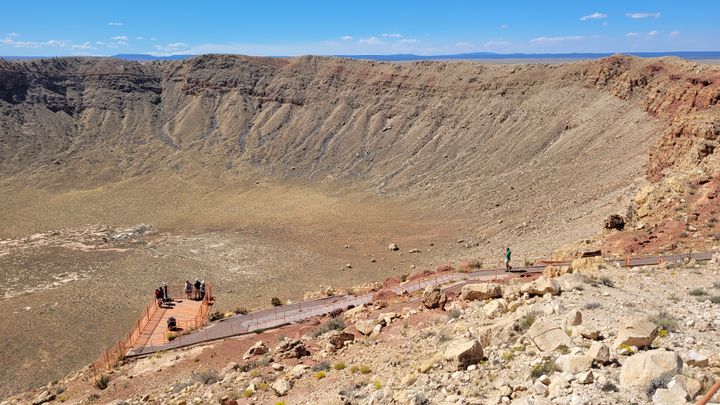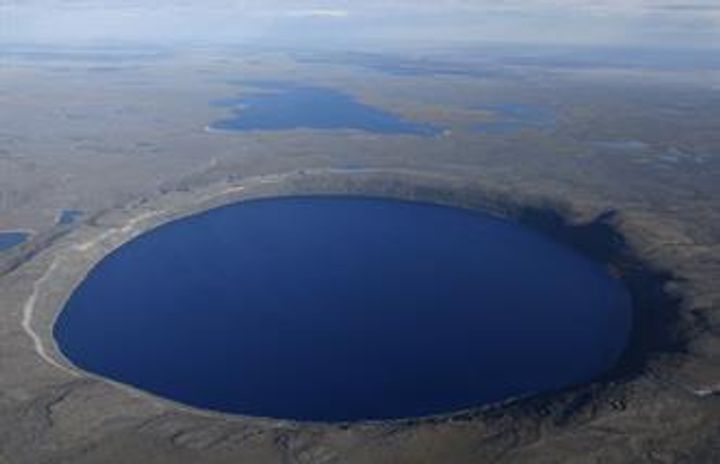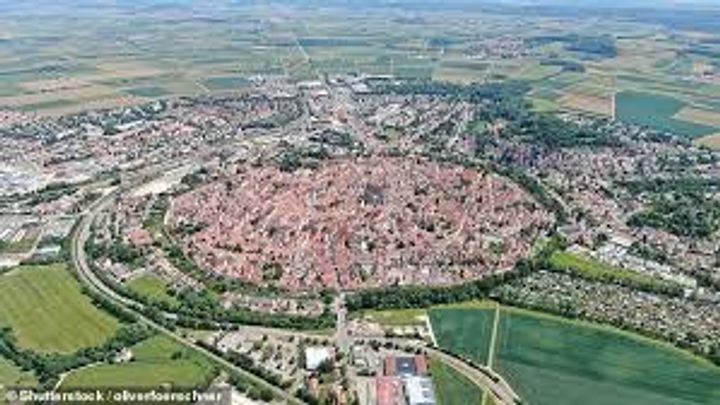Meteor Craters on Earth..
Discussion
I've recently returned from the USA and during that trip I visited 'Meteor Crater'
At totally fascinating and inspiring place for a space nerd. I highly recommend it.
The museum and displays are very good and it's an excellent example of nature's might and power.


https://en.wikipedia.org/wiki/Meteor_Crater
For me it was the highlight of that US trip and eclipsed The Grand Canyon and Monument Valley etc etc.
A 50,000 year old 1.2km wide recent scar on our planet made my a solid nickel iron mass of about 50m diameter.
It was a ten megaton blast and must have been incredible to witness and survive!
Anyway this got me thinking where are there other well preserved craters?
The next one on my list is 1.2 Millions years old but three times the size of Meteor Crater and is located in remote northern Canada.

It's very remote and only accessible by trekking to it.
https://www.nunavikparks.ca/en/parks/pingualuit
https://en.wikipedia.org/wiki/Pingualuit_crater
Anyway it's on the bucket list for 2025 now..
Any others worth a look?
At totally fascinating and inspiring place for a space nerd. I highly recommend it.
The museum and displays are very good and it's an excellent example of nature's might and power.
https://en.wikipedia.org/wiki/Meteor_Crater
For me it was the highlight of that US trip and eclipsed The Grand Canyon and Monument Valley etc etc.
A 50,000 year old 1.2km wide recent scar on our planet made my a solid nickel iron mass of about 50m diameter.
It was a ten megaton blast and must have been incredible to witness and survive!
Anyway this got me thinking where are there other well preserved craters?
The next one on my list is 1.2 Millions years old but three times the size of Meteor Crater and is located in remote northern Canada.
It's very remote and only accessible by trekking to it.
https://www.nunavikparks.ca/en/parks/pingualuit
https://en.wikipedia.org/wiki/Pingualuit_crater
Anyway it's on the bucket list for 2025 now..
Any others worth a look?
We visited the USA meteor crater on a Route 66 trip.
It was a bit windy and I had to remove my glasses as I was terrified they would get blown away.
What was mind blowing was the size of the meteor compared with the size of the crater. It was only about 50 meters. A lot vaporised on impact.
Hopefully going back in a couple of years as it is the centenary of Route 66 in 2026. We originally did it in 18 days, but now we are retired we can take our time.
It was a bit windy and I had to remove my glasses as I was terrified they would get blown away.
What was mind blowing was the size of the meteor compared with the size of the crater. It was only about 50 meters. A lot vaporised on impact.
Hopefully going back in a couple of years as it is the centenary of Route 66 in 2026. We originally did it in 18 days, but now we are retired we can take our time.
I’ve always wanted to visit the pretty little town of Nordlingen in Bavaria. Its built in a 25km wide meteor crater that impacted 15 million years ago. The crater takes the form of a circular depression that’s lower than the land around it.

https://en.wikipedia.org/wiki/N%C3%B6rdlingen
https://en.wikipedia.org/wiki/N%C3%B6rdlingen
Beati Dogu said:
I’ve always wanted to visit the pretty little town of Nordlingen in Bavaria. Its built in a 25km wide meteor crater that impacted 15 million years ago. The crater takes the form of a circular depression that’s lower than the land around it.

https://en.wikipedia.org/wiki/N%C3%B6rdlingen
I've just a stroll round that on Google Streetview. It looks lovely; reminds me a bit of Stavanger Old Town.https://en.wikipedia.org/wiki/N%C3%B6rdlingen
Gosses Bluff was awe inspiring when I thought about the collosal energy to make rock act like water.
All that remains is the central solidified "uplift"
You can drive there but it's remote.
https://en.m.wikipedia.org/wiki/Gosses_Bluff_impac...
All that remains is the central solidified "uplift"
You can drive there but it's remote.
https://en.m.wikipedia.org/wiki/Gosses_Bluff_impac...
PRO5T said:
Jeez, 50m did that?! Is it the speed at which it collided that makes the impact creator so big?
Yes. It’s the velocity of the meteor that gives it the impact power. It’s similar in concept to how rail guns work. The projectile has no explosives and simply relies and huge velocity - the results are bonkers. Still mind blowing to see such a crater though.
PRO5T said:
Jeez, 50m did that?! Is it the speed at which it collided that makes the impact creator so big?
Kinetic Energy = (Mass * (Velocity * Velocity) ) / 2Depending on the Mass, there is a threshold where the velocity is a bigger component than the Mass.
It's also why orbital rockets are so big.
Very interesting thread.
I wonder if at the point of impact if, in terms of physics, something happens at t=0? I mean does the meteor and stuff at the point of impact change into a plasma or some other unusual form of matter because of the heat/energy etc or is it simply "normal" stuff?
I wonder if at the point of impact if, in terms of physics, something happens at t=0? I mean does the meteor and stuff at the point of impact change into a plasma or some other unusual form of matter because of the heat/energy etc or is it simply "normal" stuff?
Gassing Station | Science! | Top of Page | What's New | My Stuff




